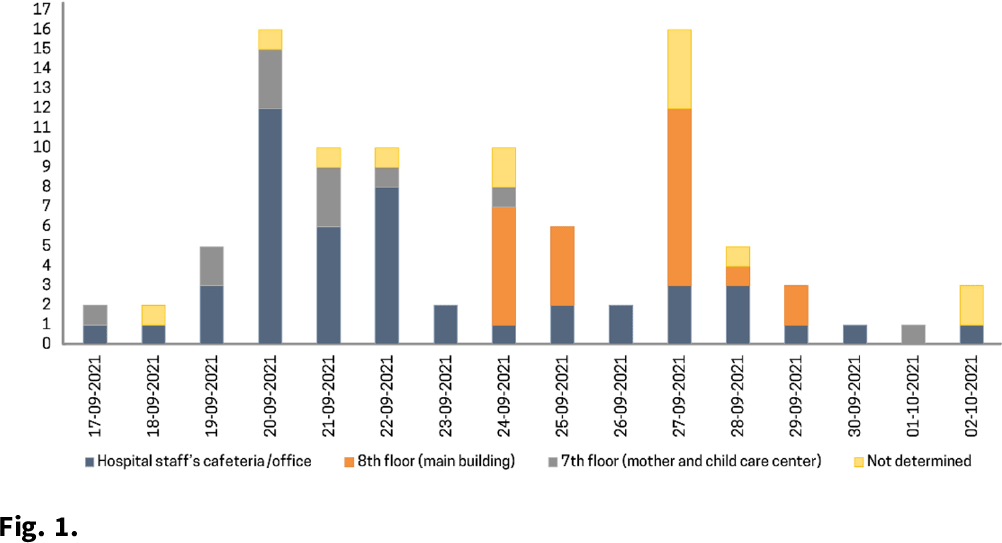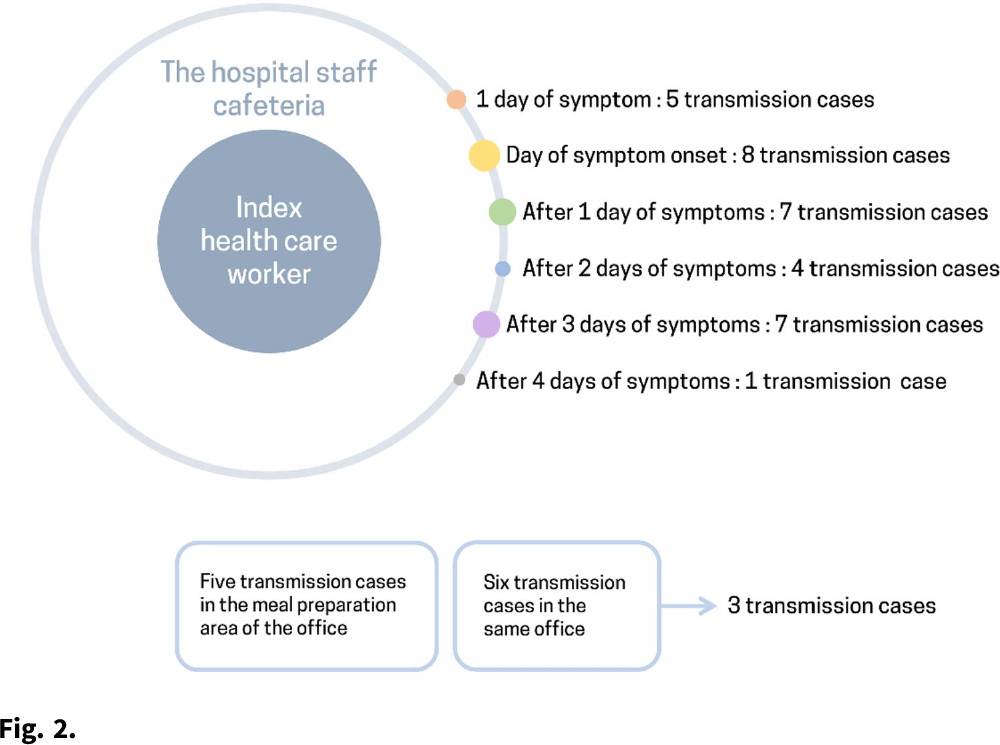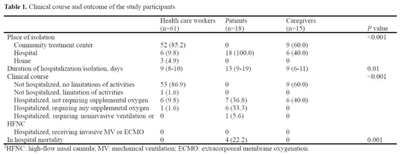99 results
The Effects of Biogeochemical Modification of Fe-Rich Smectite on the Fate of Pb
-
- Journal:
- Clays and Clay Minerals / Volume 65 / Issue 6 / December 2017
- Published online by Cambridge University Press:
- 01 January 2024, pp. 410-416
-
- Article
- Export citation
The Characterization Of CaCO3 in a Geothermal Environment: A Sem/Tem-Eels Study
-
- Journal:
- Clays and Clay Minerals / Volume 60 / Issue 5 / October 2012
- Published online by Cambridge University Press:
- 01 January 2024, pp. 484-495
-
- Article
- Export citation
Extubation in operating room versus early extubation in ICU after open-heart surgery in patients with CHDs
-
- Journal:
- Cardiology in the Young / Volume 34 / Issue 4 / April 2024
- Published online by Cambridge University Press:
- 20 November 2023, pp. 914-918
-
- Article
- Export citation
Single sidewall cooling modulation on Rayleigh–Bénard convection
-
- Journal:
- Journal of Fluid Mechanics / Volume 957 / 25 February 2023
- Published online by Cambridge University Press:
- 16 February 2023, A13
-
- Article
-
- You have access
- Open access
- HTML
- Export citation
Identifying Possible Two-Level-System Sources in Superconducting Qubit with Advanced Electron Microscopy
-
- Journal:
- Microscopy and Microanalysis / Volume 28 / Issue S1 / August 2022
- Published online by Cambridge University Press:
- 22 July 2022, pp. 1716-1717
- Print publication:
- August 2022
-
- Article
-
- You have access
- Export citation
A SARS-CoV-2 outbreak due to vaccine breakthrough in an acute-care hospital
-
- Journal:
- Antimicrobial Stewardship & Healthcare Epidemiology / Volume 2 / Issue S1 / July 2022
- Published online by Cambridge University Press:
- 16 May 2022, p. s83
-
- Article
-
- You have access
- Open access
- Export citation
The impact of the COVID-19 pandemic on depression in community-dwelling older adults: a prospective cohort study
-
- Journal:
- Psychological Medicine / Volume 53 / Issue 7 / May 2023
- Published online by Cambridge University Press:
- 17 December 2021, pp. 2992-2999
-
- Article
- Export citation
Paediatric heart transplantation recipients ≥7 years of age receiving donors with pre-existing coronary atherosclerosis showed progressive coronary artery disease
- Part of
-
- Journal:
- Cardiology in the Young / Volume 32 / Issue 7 / July 2022
- Published online by Cambridge University Press:
- 27 September 2021, pp. 1104-1111
-
- Article
- Export citation
On the acoustic fountain types and flow induced with focused ultrasound
-
- Journal:
- Journal of Fluid Mechanics / Volume 909 / 25 February 2021
- Published online by Cambridge University Press:
- 23 December 2020, R2
-
- Article
- Export citation
How to keep patients and staff safe from accidental SARS-CoV-2 exposure in the emergency room: Lessons from South Korea’s explosive COVID-19 outbreak
- Part of
-
- Journal:
- Infection Control & Hospital Epidemiology / Volume 42 / Issue 1 / January 2021
- Published online by Cambridge University Press:
- 30 July 2020, pp. 18-24
- Print publication:
- January 2021
-
- Article
-
- You have access
- Open access
- HTML
- Export citation
Corrigendum to: “TAAR6 variation effect on clinic presentation and outcome in a sample of schizophrenic in-patients: An open label study” [Eur Psychiatr 2008;23:390–5]
-
- Journal:
- European Psychiatry / Volume 24 / Issue 1 / 2009
- Published online by Cambridge University Press:
- 16 April 2020, p. 64
-
- Article
-
- You have access
- HTML
- Export citation
TAAR6 variation effect on clinic presentation and outcome in a sample of schizophrenic in-patients: An open label study
-
- Journal:
- European Psychiatry / Volume 23 / Issue 6 / September 2008
- Published online by Cambridge University Press:
- 16 April 2020, pp. 390-395
-
- Article
- Export citation
On the dynamics of air bubbles in Rayleigh–Bénard convection
-
- Journal:
- Journal of Fluid Mechanics / Volume 891 / 25 May 2020
- Published online by Cambridge University Press:
- 18 March 2020, A7
-
- Article
- Export citation
On the distinct drag, reconfiguration and wake of perforated structures
-
- Journal:
- Journal of Fluid Mechanics / Volume 890 / 10 May 2020
- Published online by Cambridge University Press:
- 02 March 2020, A1
-
- Article
- Export citation
Flow-induced motions of flexible plates: fluttering, twisting and orbital modes
-
- Journal:
- Journal of Fluid Mechanics / Volume 864 / 10 April 2019
- Published online by Cambridge University Press:
- 07 February 2019, pp. 273-285
-
- Article
- Export citation
Current distribution and status of the Eurasian otter Lutra lutra in South Korea
-
- Article
-
- You have access
- HTML
- Export citation
Holocene environmental change inferred from multiple proxies in the mouth of Gomso Bay on the west coast of South Korea
-
- Journal:
- Quaternary Research / Volume 88 / Issue 2 / September 2017
- Published online by Cambridge University Press:
- 26 July 2017, pp. 193-205
-
- Article
- Export citation
24-Hour Ambulatory Blood Pressure Monitoring in SWEDDs Patients With Parkinsonism
-
- Journal:
- Canadian Journal of Neurological Sciences / Volume 43 / Issue 3 / May 2016
- Published online by Cambridge University Press:
- 08 February 2016, pp. 390-397
-
- Article
-
- You have access
- HTML
- Export citation
Surface darkening phenomenon of Zn–Mg alloy coated steel exposed to aqueous environment at high temperature
-
- Journal:
- Journal of Materials Research / Volume 30 / Issue 23 / 14 December 2015
- Published online by Cambridge University Press:
- 09 December 2015, pp. 3605-3615
- Print publication:
- 14 December 2015
-
- Article
- Export citation











































